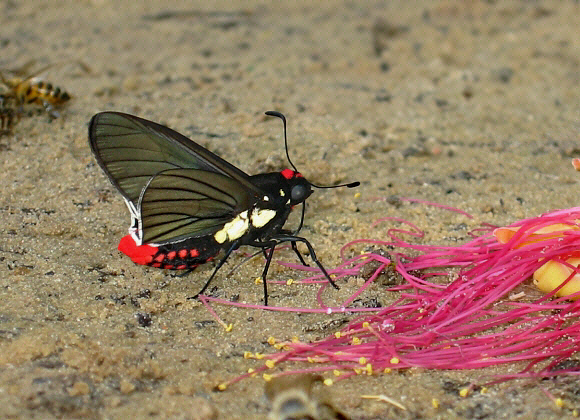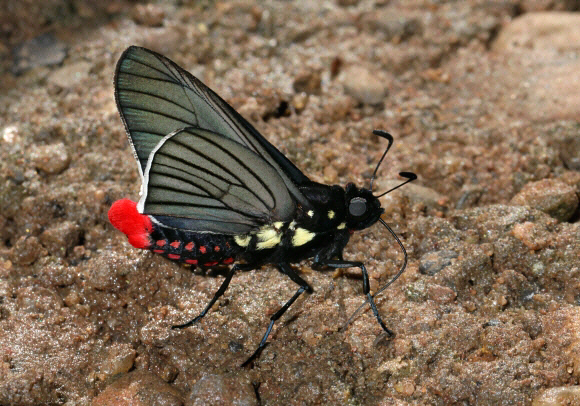
Introduction
The subfamily Pyrrhopyginae comprises 163 known species, most of which are found only in the tropical rainforests and cloudforests of South America, although a few reach as far north as Mexico, and a single species reaches Arizona. They are characterised by having bodies which are very large in proportion to the wings. Other characteristics include a massive muscular thorax, compressed abdominal segments, prominent eyes, and antennae with recurved clubs.
There are 17 genera, including Jemadia and Elbella, which have hyaline ‘windows’ on the forewings. Other genera include Pyrrhopyge which comprises of 38 species, most of which have black wings, red heads, and red tipped abdomens.
The genus Mysarbia comprises a single species – sejanus. It was for many years known as Mysoria thasus but was reclassified in 2002 by Mielke. True Mysoria species can easily be recognised by the narrow crimson or orange edge to the costa of the underside hindwing.
Mysarbia are sometimes also confused with Pyrrhopygopsis ( Hesperiinae ). The latter however do not have creamy white patches on the lateral thorax, or pink lateral dots on the abdomen.
Mysarbia sejanus is distributed from Colombia and Venezuela to Bolivia. Subspecies stolli which is found in Colombia, Venezuela, Ecuador and Brazil has a red tuft on the head. This is also present in the Bolivian subspecies erythrostigma, but is often absent in sejanus sejanus from Peru.

Habitats
This species is found in rainforest and cloudforest at altitudes between about 500-1500m.
Lifecycle
I have no data relating to the lifecycle of Mysarbia.
Adult behaviour
Males are almost always encountered as singletons, imbibing mineralised moisture from damp sunlit tracks or roads in rainforest or cloudforest. They can also sometimes be found on the river beaches of Amazonian tributaries, or at the edge of lagoons. Almost all other members of the Pyrrhopyginae bask periodically with their wings outspread, but I have never observed this posture in Mysarbia, which always hold their wings erect, even in overcast weather.
